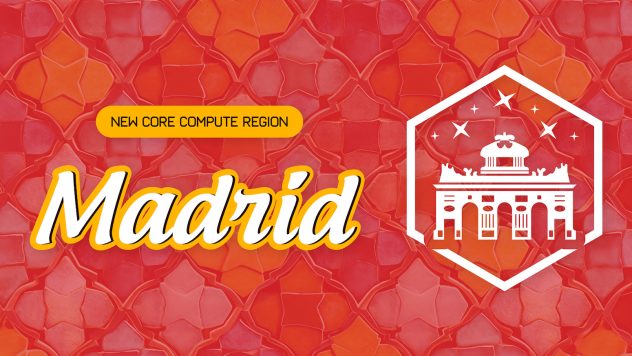Heute veröffentlichen wir bedeutende Verbesserungen unserer Images-Funktionen (verfügbar in der Beta-Version) für alle Kunden und Rechenzentren. Während wir Entwickler schon lange dabei unterstützen, Abbild-Snapshots zu erstellen, um Services auf Linode-Instanzen einfach bereitzustellen, können Sie jetzt Ihr eigenes Image über den Cloud Manager, das API oder CLI hochladen und die Vorteile der erweiterten Speicherkapazität pro Konto nutzen.
Der aktualisierte Images-Service reduziert den Overhead bei der Bereitstellung von Linodes erheblich und ermöglicht es unseren Kunden, Images in vollem Umfang zu nutzen. Images werden auch dann gespeichert, wenn Sie keine aktiven Linodes haben. Das Image ist also immer verfügbar, wenn Sie es brauchen, und kann auf jeder Linode in jedem Rechenzentrum bereitgestellt werden.
Images bleibt während der Beta-Phase ein kostenloser Dienst und wird ab dem 1. September 2021 zu einem kostenpflichtigen Dienst von $0,10/GB pro Monat übergehen. Alle Benutzer von Images werden im Voraus über den Linode-Support über die Änderung informiert, so dass Sie die Möglichkeit haben, Images bei Bedarf zu entfernen.
Automatische Images, die kurzlebige Wiederherstellungsimages sind, die nach dem Löschen einer Linode erzeugt werden, bleiben kostenlos.
Linode Images unterstützt derzeit das Hochladen von Abbilddateien eines Rohdatenträgers (.img), die vor dem Hochladen mit gzip (.gz) komprimiert wurden. Die maximale komprimierte Dateigröße für das Hochladen eines Abbilds beträgt 5 GB. Wenn die Abrechnung für Images in Kraft tritt, wird Ihnen die unkomprimierte Größe des Abbilds berechnet.
Teilnahme an der Images Beta
Alle Linode-Nutzer sind herzlich eingeladen, die neuen Funktionen von Images auszuprobieren. Lesen Sie den aktualisierten Leitfaden zu Linode Images für eine Schritt-für-Schritt-Anleitung, einschließlich Hochladen eines Abbilds über den Cloud Manager.
Wir haben vor, unseren Service Images weiter zu verbessern. Bitte senden Sie uns daher Ihr Feedback zu Funktionen oder Ihren Erfahrungen an https://www.linode.com/feedback/. Wenn Sie ein technisches Problem haben, öffnen Sie bitte ein Support-Ticket, damit wir es so schnell wie möglich lösen können.








Kommentare (8)
Improvements should be improvements and not breaking working functionality.
I just started a couple nodes with existing images, and the nodes were created and started without expanding the disks to the plan full storage.
So literally they had a root device having 1.7 GB with 0 free space.
Who tested this release?
Sandor Marton: When you deploy a Linode with an Image it does not automatically expand to its fully allotted disk space, but creates a disk that is equal to the size of the Image, therefor you need to perform a disk resize after you deploy. With that said, I’ve included your feedback in an internal discussion about this particular feature of our Images.
I’m pretty sure the dashboard did resize automatically ( or maybe the old one did, since i didn’t use images for the past 4-6- months)
Also there is no point to automatically start the node with an image sized disk, since disk will have zero available space and the OS won’t be able to boot properly.
From my point of view there should be no difference between starting a node from a distribution image, and starting a node from my own image.
I think we should have an option to download the current image if it will no longer be free of charge.
We agree – this is on our radar to do soon, though I don’t have an ETA on when that feature will be available. Until that is ready, you can follow the following guide to download a copy of a Linode: Copy a Disk Over SSH
In this new beta I have a problem with uploading an image via Cloud Manager. Are there any instructions specifically for this process in the documentation?
We updated our documentation to include steps on uploading an Images. If you run into further issues, please open a support ticket with logs, error messages, or details that you encounter while attempting to upload your Image. These details will be helpful for us when we assist with troubleshooting.
This is weird. If you’re going to charge for the service, why the still quite tight limits?
A 6 GB max is definitely a lot better than it was before, but it still may be fairly confining for some uses. I have a base image right now that’s just Fedora + application that comes to 4.5 GB. While my usage case fits well within the limit, if now the data is being paid for, why not bump it until whatever is the internal reasonable maximum?
Also, .gz is an extremely old compression format. If you’re using it because of performance considerations, may I suggest zstd? It decompresses extremely quickly (about the same as gzip according to benchmarks), and achieves a much greater compression ratio.